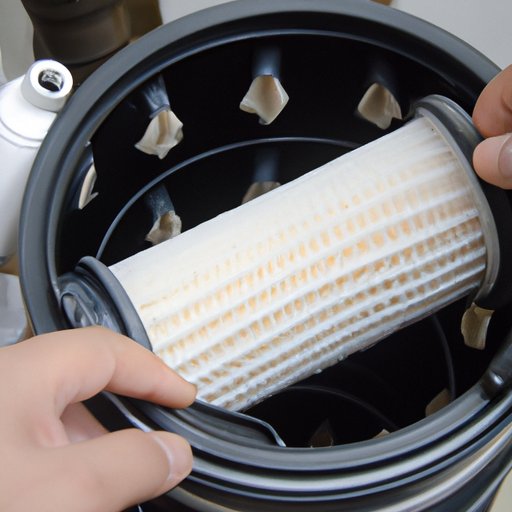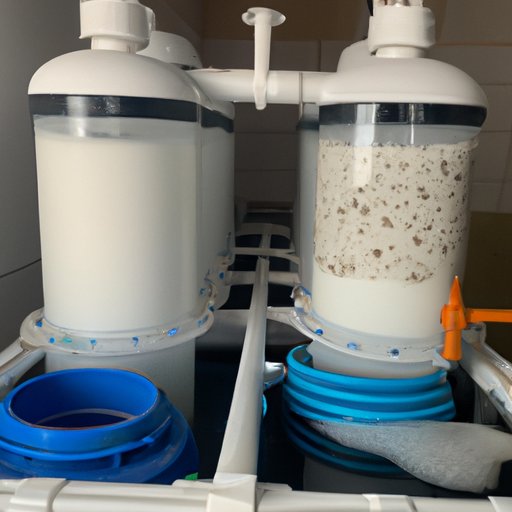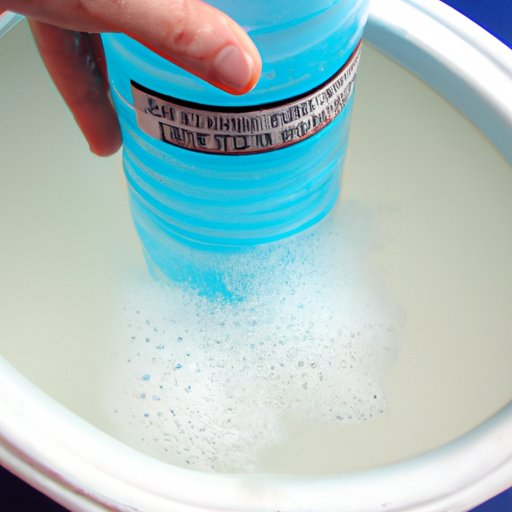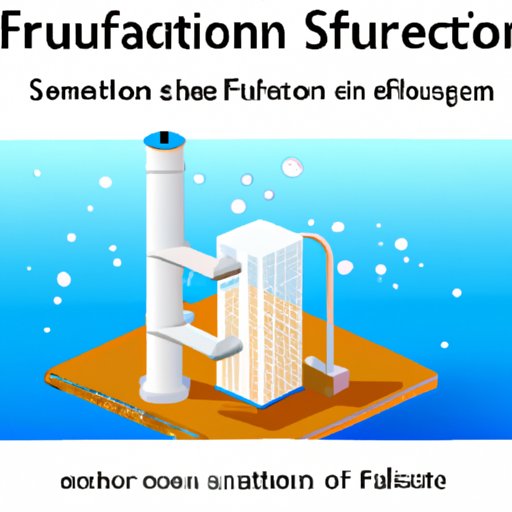Introduction
If you’ve noticed a strong sulfur smell coming from your well water, it’s likely due to the presence of hydrogen sulfide gas (H2S). This gas can give off a rotten egg smell and taste, making your well water unpleasant to drink or use. Fortunately, there are several methods for removing the sulfur smell from your well water.

Install an Iron Filter System
An iron filter system is one of the most common ways to remove sulfur smell from well water. Iron filter systems use oxidation to convert dissolved iron, manganese, and sulfur into solid particles that are then filtered out of the water. These systems typically use air injection, which injects air into the water to create a chemical reaction. The reaction causes the sulfur-containing compounds to oxidize, forming insoluble particles that can be easily filtered out.
Installing an iron filter system requires a few steps. First, you’ll need to test your water to determine the levels of iron, manganese, and sulfur present. Then, you’ll need to select the correct size of filter for your needs. Once the filter is installed, you’ll need to regularly maintain it to ensure it’s working properly. This includes backwashing the filter media, cleaning or replacing the filter cartridges, and adding the appropriate chemicals to the filter.
Use Activated Carbon Filter
Another option for removing sulfur smell from well water is to install an activated carbon filter. Activated carbon filters are effective at removing a wide range of contaminants, including H2S. When the water passes through the filter, the activated carbon absorbs the sulfur-containing compounds, leaving the water odor-free.
Installing an activated carbon filter requires similar steps to installing an iron filter system. You’ll need to test your water to determine the levels of H2S present, then select the correct size of filter for your needs. Once the filter is installed, you’ll need to regularly maintain it to ensure it’s working properly. This includes backwashing the filter media, cleaning or replacing the filter cartridges, and adding the appropriate chemicals to the filter.

Utilize a Reverse Osmosis Filtration System
Reverse osmosis (RO) filtration systems are also effective at removing sulfur smell from well water. RO systems utilize a semi-permeable membrane to filter out contaminants, including H2S. As the water passes through the membrane, the sulfur-containing compounds are removed, leaving the water odor-free.
Installing an RO system requires a few steps. First, you’ll need to test your water to determine the levels of H2S present. Then, you’ll need to select the correct size of filter for your needs. Once the filter is installed, you’ll need to regularly maintain it to ensure it’s working properly. This includes backwashing the filter media, cleaning or replacing the filter membranes, and adding the appropriate chemicals to the filter.

Add Hydrogen Peroxide to Your Water Tank
Adding hydrogen peroxide to your water tank is another option for removing sulfur smell from well water. Hydrogen peroxide is a powerful oxidizer that can help break down sulfur-containing compounds and reduce the sulfur smell. To use this method, simply add hydrogen peroxide to your water tank and wait for the sulfur smell to dissipate.
Adding hydrogen peroxide to your water tank is a relatively simple process. All you need to do is measure out the correct amount of hydrogen peroxide for your water tank and slowly pour it in. Make sure to keep the water level low so that the hydrogen peroxide has time to mix with the water before it is used.
Shock Chlorinate the Well
Shock chlorination is another method for removing sulfur smell from well water. Shock chlorination involves introducing chlorine into the well water in order to kill bacteria and other organisms that may be causing the sulfur smell. The chlorine reacts with the sulfur-containing compounds, breaking them down and reducing the sulfur smell.
Shock chlorination is a relatively simple process. All you need to do is measure out the correct amount of chlorine for your well and slowly pour it in. Make sure to keep the water level low so that the chlorine has time to mix with the water before it is used. It’s also important to make sure that the chlorine is completely gone from the well before using the water.
Utilize Aeration to Remove Sulfur Odors
Aeration is another method for removing sulfur smell from well water. Aeration involves introducing air into the well water in order to oxidize the sulfur-containing compounds, breaking them down and reducing the sulfur smell. Aeration can also help reduce the levels of iron and manganese in the water.
Installing an aeration system requires a few steps. First, you’ll need to test your water to determine the levels of iron, manganese, and sulfur present. Then, you’ll need to select the correct size of aerator for your needs. Once the aerator is installed, you’ll need to regularly maintain it to ensure it’s working properly. This includes backwashing the aerator media, cleaning or replacing the aerator cartridges, and adding the appropriate chemicals to the aerator.
Conclusion
Sulfur smell in well water can be unpleasant, but it doesn’t have to be permanent. By utilizing an iron filter system, an activated carbon filter, a reverse osmosis filtration system, adding hydrogen peroxide to your water tank, shock chlorinating the well, and utilizing aeration, you can effectively remove the sulfur smell from your well water.
(Note: Is this article not meeting your expectations? Do you have knowledge or insights to share? Unlock new opportunities and expand your reach by joining our authors team. Click Registration to join us and share your expertise with our readers.)
